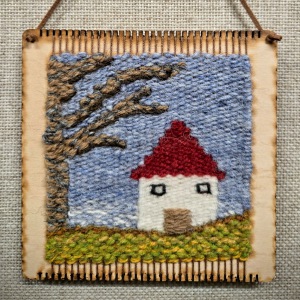Take Me Outside: Lights out for wildlife
| Published: 05-04-2024 7:00 AM |
May 1 is halfway between the spring equinox in March and the summer solstice in June. Since the equinox, there have been more hours of day than night. Yet darkness is important to natural rhythms and life cycles.
Many people aren’t aware that 80% of North American migratory birds make their trip north (or south in the fall) during the night. This includes most songbirds, shorebirds, and ducks. Millions of birds are moving while we sleep. During the night, winds are generally calmer, and it’s cooler, which helps birds conserve energy. They are less likely to overheat (migrating is hard work). Nighttime flying also avoids predators such as hawks (which migrate during the day) and domestic cats (the number one killer of songbirds).
Traveling at night presents some challenges of course. Birds cannot use the visual landmarks of shorelines and rivers. Instead, they rely on an internal compass and light from the moon and stars to navigate. Increased artificial lighting has made that much harder.
Outdoor lighting can overpower starlight and reduce visibility, confusing birds and causing them to steer off their migratory route. If they end up in unfamiliar territories, they are at increased risk of predation, or starvation due to lack of known food sources. They may also be distracted by building lights, resulting in fatal collisions with windows, towers, or other structures. These impacts are exacerbated on cloudy or foggy nights when birds migrate at lower altitudes and lights reflecting on clouds can increase the brightness.
Birds are not the only creatures that experience negative impacts from our lights. As the weather warms, insects are emerging. About half of the millions of insect species on Earth are nocturnal. These include hundreds of moth species, which some studies have shown to be more effective pollinators than daytime bees. Nighttime pollinators are less likely to visit flowers that are under outdoor lights.
You’ve probably seen moths and other flying insects fluttering around outdoor lights. Many of these become disoriented by the lights, will die from exhaustion, or get snatched by predators that take advantage of the swarming illuminated buffet. Reduction in the moth population impacts birds, bats and amphibians who rely on the adults or larvae for food.
Fireflies rely on bioluminescent signals to find each other. They can be distracted by artificial lights, and additional lighting can diminish the visibility of a potential flashing mate.
Insects, such as mayflies that lay their eggs in the water, can be fooled by lights reflecting off pavement, mimicking a shimmering lake. Eggs laid on asphalt will not hatch.
Article continues after...
Yesterday's Most Read Articles
 By all appearances, Canadians are leery of coming to NH
By all appearances, Canadians are leery of coming to NH
 Plans advance on $27M Memorial Field project
Plans advance on $27M Memorial Field project
 “A dream come true” – Family opens housing for adults with disabilities in Concord
“A dream come true” – Family opens housing for adults with disabilities in Concord
 Memorial Day events in the Concord area
Memorial Day events in the Concord area
 Giving life back to board sports: Back Alley Boards upcycles boards into art
Giving life back to board sports: Back Alley Boards upcycles boards into art
 ‘I thought we had some more time’ – Coping with the murder-suicide of a young Pembroke mother and son
‘I thought we had some more time’ – Coping with the murder-suicide of a young Pembroke mother and son
Even diurnal insects such as the monarch butterfly can be impacted by lights that burn all night. During their epic migration to and from Mexico, monarchs roost at night to rest. If they roost near a porch light or streetlight, their circadian rhythms may become disrupted. They may take wing when they should be resting, thus adding to the impacts on this already threatened, iconic butterfly.
Recent studies have shown that insects and birds have experienced dramatic population declines. Causes include pesticides, habitat loss, industrial pollution, climate change, and invasive species. Add outdoor lighting to the list and things are even worse.
At this point you might be thinking, but outside lights are important for safety, they attract business and sometimes are just fun and festive. How do we balance our needs with those of other inhabitants of the planet?
Fortunately, at least with household lighting, there are easy things anyone can do to reduce light pollution. Make sure any outdoor lights are facing down or have a shield to keep unwanted light from escaping toward the sky. Use motion activated lights or timers to ensure lights are only on when needed. Close your shades or blinds to keep light from spilling out through your windows. Turn off any lights that aren’t necessary.
The color of lights also makes a difference. Bright white or blue lights should be avoided. Amber or warm colored lights are the least impactful to wildlife.
In addition to helping birds and insects, decreasing outdoor lighting saves money on energy costs, and reduces emissions from power plants. It might seem like a small step, but like with every small action, if enough people do it, improvement happens.







 Artist Spotlight: Brittany Batchelder
Artist Spotlight: Brittany Batchelder Young Professional of the Month Katie Duncan shares about creativity, community, connection
Young Professional of the Month Katie Duncan shares about creativity, community, connection Tiny Tapestry sale at Red River Theaters raising money for Concord Coalition to End Homelessness
Tiny Tapestry sale at Red River Theaters raising money for Concord Coalition to End Homelessness Bowling for a cause: Angelman Syndrome Fundraiser coming to Boutwell’s
Bowling for a cause: Angelman Syndrome Fundraiser coming to Boutwell’s
